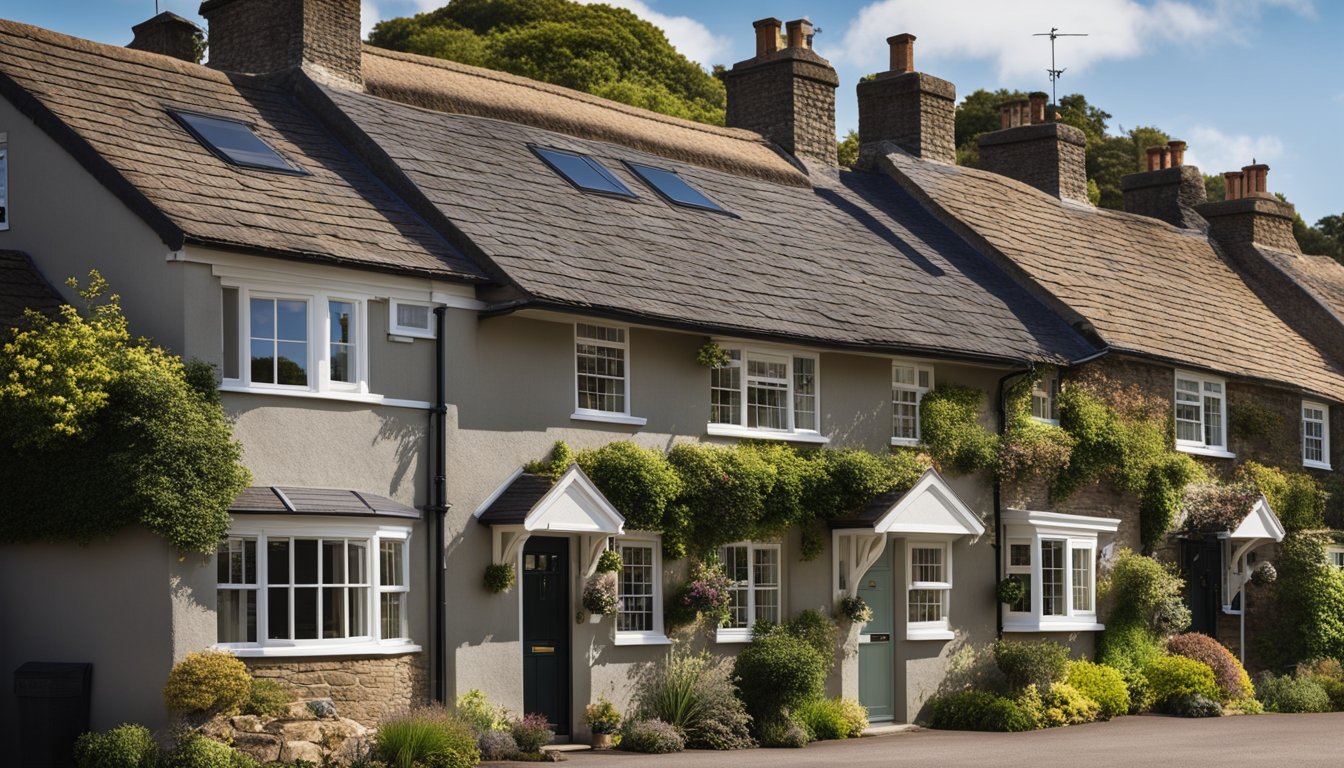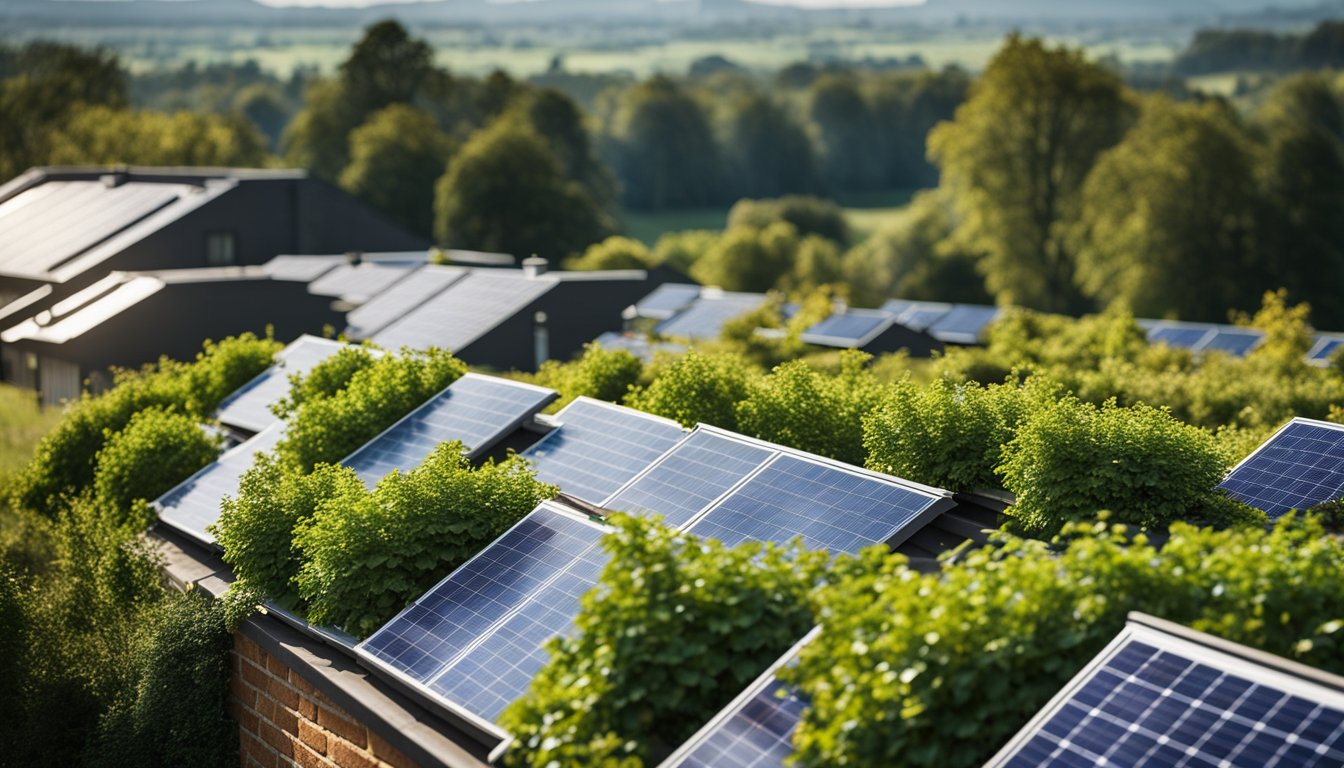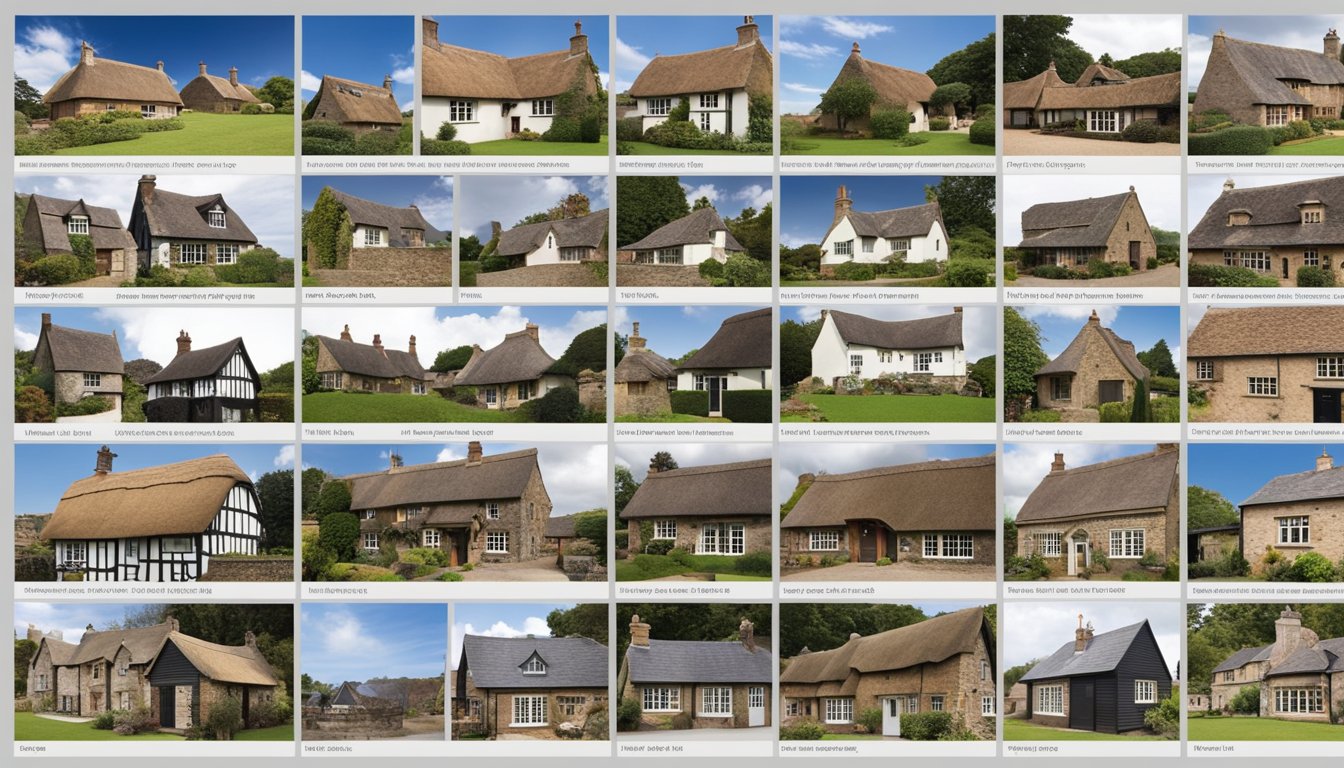Late updated: 18 Jul 2024 09:07
Written by: Oliver Bennett
The History Of Roofing Styles In The UK: From Thatch to Tiles
Roofing styles in the UK have shaped the very character of our towns and cities. From the ancient thatched roofs of quaint cottages to the robust slate coverings on Victorian houses, the evolution is both fascinating and diverse. Understanding this historical evolution gives us insight into how roofing has influenced architecture and living standards.

From the Romans introducing clay tiles in the 1st century AD to the resurgence of slate and clay in the medieval period, each era brought its own innovations. Thatch, often associated with rustic charm, was once common among the poorer classes. Fast forward to today, thatch has become a symbol of English elegance and heritage. The transformation of roofing materials and styles demonstrates the adaptability and resilience of the UK’s architectural practices.
In recent times, the focus has shifted towards sustainability and technology. Modern materials and techniques offer greater energy efficiency and environmental benefits. By examining the history and looking forward, we can appreciate the intricate balance between tradition and innovation in the roofing industry.
Key Takeaways
- The history of roofing styles in the UK highlights significant changes in materials and methods.
- Thatch, clay, and slate have all played crucial roles in different periods of English architecture.
- Contemporary roofing increasingly emphasises sustainability and technological advancement.
Historical Evolution of Roofing Styles in the UK
The history of roofing styles in the UK has been shaped by various factors such as available materials, technological advancements, and significant historical events. Exploring these changes provides insight into how roofing practices have evolved over the centuries.
From Thatch to Slate: Pre-Industrial Materials
In ancient Britain, thatched roofs were paramount. We used natural materials like straw, reeds, and water reed to craft these roofs. Simple to construct, they suited the available resources and the rural landscapes of England and Wales.
With Roman influence, we saw the introduction of clay tiles. These tiles were not only durable but also provided aesthetic appeal. They heralded a shift from organic materials to more lasting options, such as stone and slate.
During the Middle Ages, slate became popular in regions like Wales. This material, known for its longevity and fire resistance, provided significant advantages over thatch. By the pre-industrial era, a mix of thatch, clay tiles, and slate characterised roofing across the UK.
Innovation Through Turmoil: The Post-Great Fire Era
The Great Fire of London in 1666 was a pivotal moment. The fire's devastation led to stricter building regulations which mandated the use of fireproof materials. Thus, clay tiles gained prominence. Their fire-resistant properties made them a preferred choice over thatch.
Post-fire, roofing techniques evolved to enhance safety. Timbers were used more sparingly, and roofs incorporated better ventilation. The architectural landscape of London and beyond transformed.
This period also saw advancements in tile manufacturing, making it more accessible. Fireproofing became a key consideration, a trend which would continue to influence roofing practices in the future.
The Industrial Revolution to Modern Day
The Industrial Revolution brought sweeping changes to roofing. Mass production made materials like slate, clay tiles, and metals widely available. The rise of cities and increased construction demanded more uniform and durable roofing solutions.
Concrete emerged as a new material, providing an economical and robust alternative. Innovations like asphalt shingles introduced versatility, while metal roofing offered durability and ease of installation.
In contemporary times, we prioritised sustainability and energy efficiency. Modern roofing includes green roofs, solar panels, and advanced insulation technologies. These not only reduce environmental impact but also meet the aesthetic and functional demands of today's buildings.
From ancient thatch to innovative modern solutions, the evolution of roofing in the UK reflects our adaptability and pursuit of better shelter through the ages.
Contemporary Roofing Technologies and Sustainability

In the UK, modern roofing technologies and sustainability efforts are transforming how we approach building and maintaining roofs. Advances in solar and smart roofing solutions, alongside steadfast traditions like thatch and tile, shape the landscape of today's roofing industry.
Solar and Smart Roofing Solutions
Solar roofing integrates photovoltaic cells into the roof materials, producing electricity for homes. These panels can be embedded seamlessly into traditional roofing materials, providing an aesthetic and functional upgrade. Smart roofing extends this innovation by incorporating technologies such as cool roofing and rainwater harvesting systems.
These advancements reduce carbon footprints and energy costs. We're seeing an increasing adoption rate in urban and rural areas alike, driven by government incentives and environmental awareness. Solar panels convert sunlight into electricity even in the UK's often cloudy weather, making it a viable option for sustainable energy.
Maintaining Traditions: Thatch and Tile in the 21st Century
Traditional thatch roofing, using straw or reed, remains popular in rural UK areas. Modern techniques have improved its durability and fire resistance. This method is sustainable, using local materials that are biodegradable and renewable. Thatch roofs offer excellent insulation, keeping homes warm in winter and cool in summer.
Clay tiles, another historic material, continue to be relevant with modern adaptations. They are durable, recyclable, and available in various styles and colours, allowing homeowners to retain a traditional look while embracing contemporary performance standards. Advances in manufacturing have enhanced their ability to withstand severe weather, making them an enduring choice in the UK's roofing industry.
Frequently Asked Questions

Our journey through the history of roofing in the UK has raised some interesting questions about classic designs, material evolution, and regulatory standards. Let's delve into these topics.
What constitutes a classic roof design within British architecture?
Classic British roof designs often feature steep pitches, gabled ends, and the use of traditional materials like slate and clay tiles. These elements contribute to the iconic look of heritage buildings, reflecting both functional and aesthetic considerations.
How have roofing materials evolved over the centuries in England?
Roofing materials in England have transitioned from natural elements like thatch and wood to more durable options such as slate, clay tiles, and metal. Modern innovations include synthetic materials that mimic traditional appearances while offering enhanced durability.
What are the predominant roofing styles found in Victorian-era British homes?
Victorian-era homes in the UK are characterised by ornate details and complex roof structures. Dominant styles include steep gabled roofs, elaborate chimneys, dormer windows, and the extensive use of slate, contributing to their distinctive and enduring elegance.
Can you outline the progression of thatched roofing throughout the UK's history?
Thatched roofing in the UK dates back to the Bronze Age. Initially made from locally sourced reeds, straw, and rushes, its use peaked in medieval times. Thatching's popularity declined with the rise of tiled roofing but remains a cherished technique in rural areas and heritage projects.
What regulatory standards govern roof construction and design in the United Kingdom?
UK roof construction and design are regulated by building codes and standards ensuring safety, durability, and energy efficiency. Key regulations include the Building Regulations 2010 and associated Approved Documents, which cover structure, fire safety, and thermal performance.
In what way have modern UK roofing techniques been influenced by historical practices?
Modern UK roofing techniques incorporate historical practices by blending traditional aesthetics with contemporary materials and methods. Advanced technologies allow us to recreate the timeless appearance of classic roofs while improving weather resistance, insulation, and overall longevity.
